Ray-sounding Adventures: The Acoustic Tagging of Common Eagle Rays on the West Coast of South Africa
In partnership with West Coast Shore Angling Association and Neptune Angling Club, 23 passionate and conservation-minded anglers volunteered their Saturday to assist us in catching and tagging eagle rays on the West Coast of South Africa. Fishing started at sunrise, and it wasn’t long before the first eagle ray was being collected from the water to be prepped for tagging.
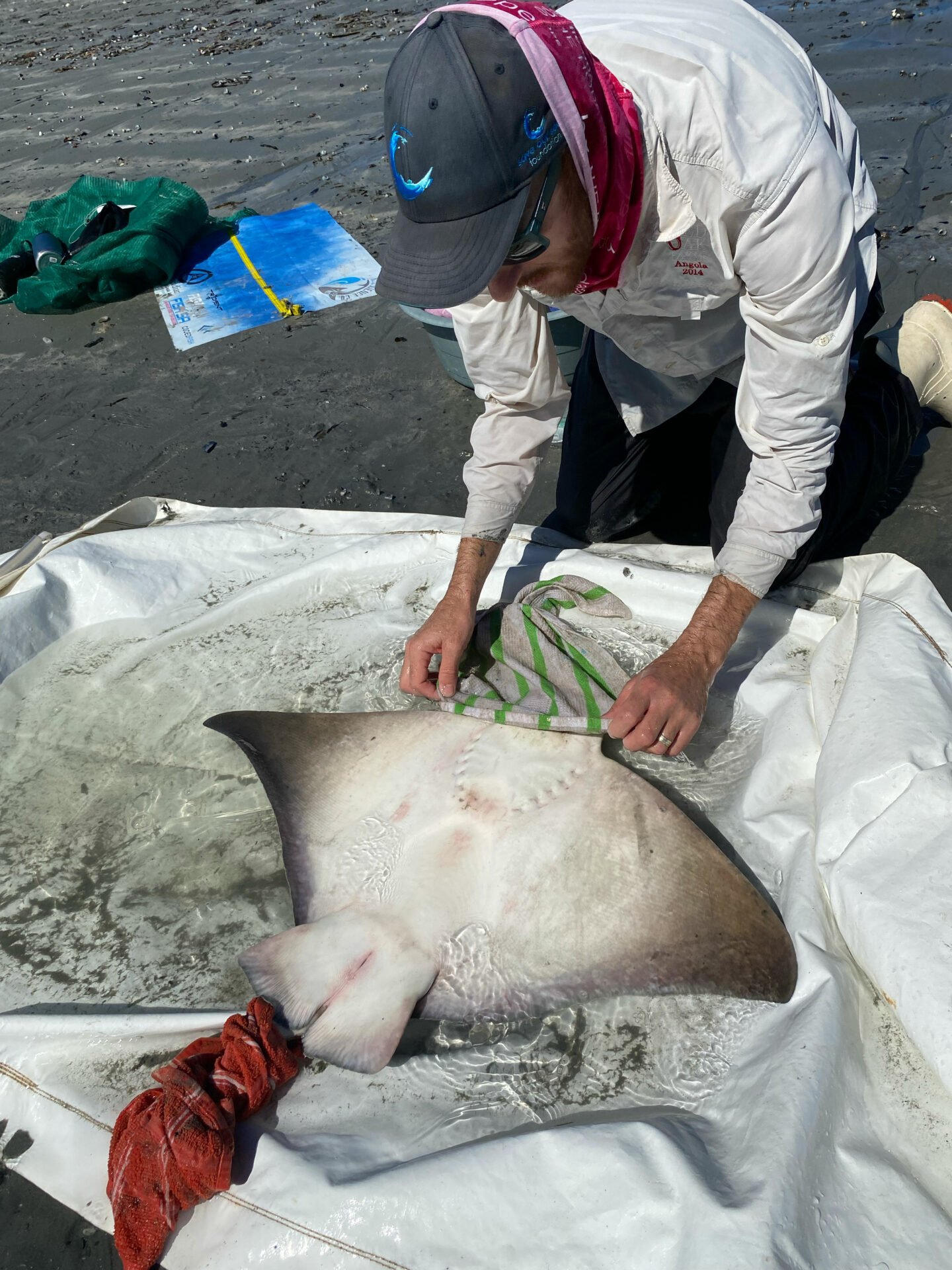
Preparing a ray for tagging. Photo © Michelle Soekoe
The eagle rays are brought close to the shore where they are gently placed in a water-filled sling and transported to a nearby field laboratory. By minimizing handling, we help preserve their protective slime barrier, reducing the risk of injury and infection. This method also eliminates air exposure. The eagle rays stay in the sling filled with water during the entire tagging process.
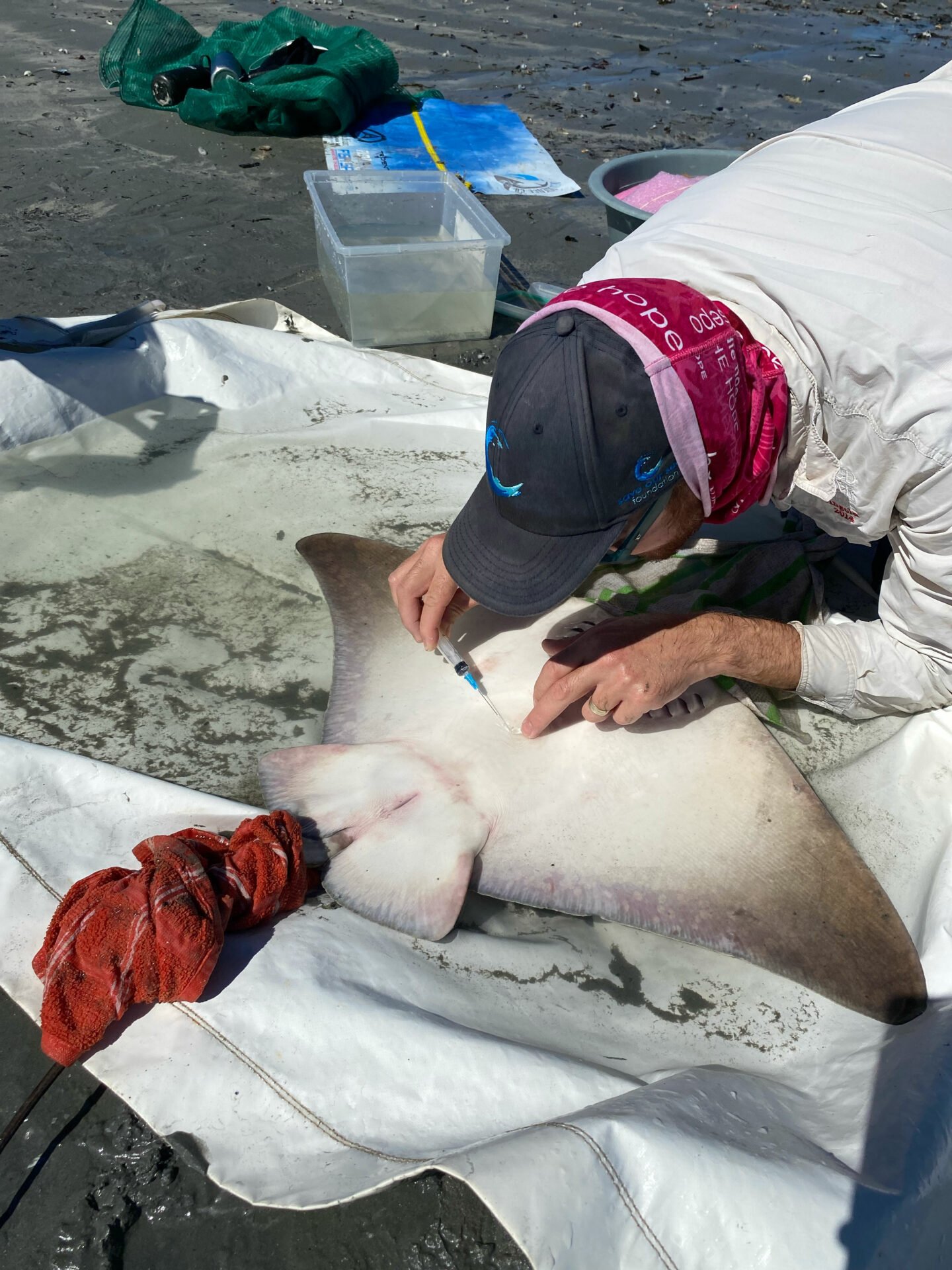
Administering anaesthetic. Photo © Michelle Soekoe
A local anaesthetic is applied to the surgical site. After a short waiting period for the anaesthetic to take effect, the implantation process begins.
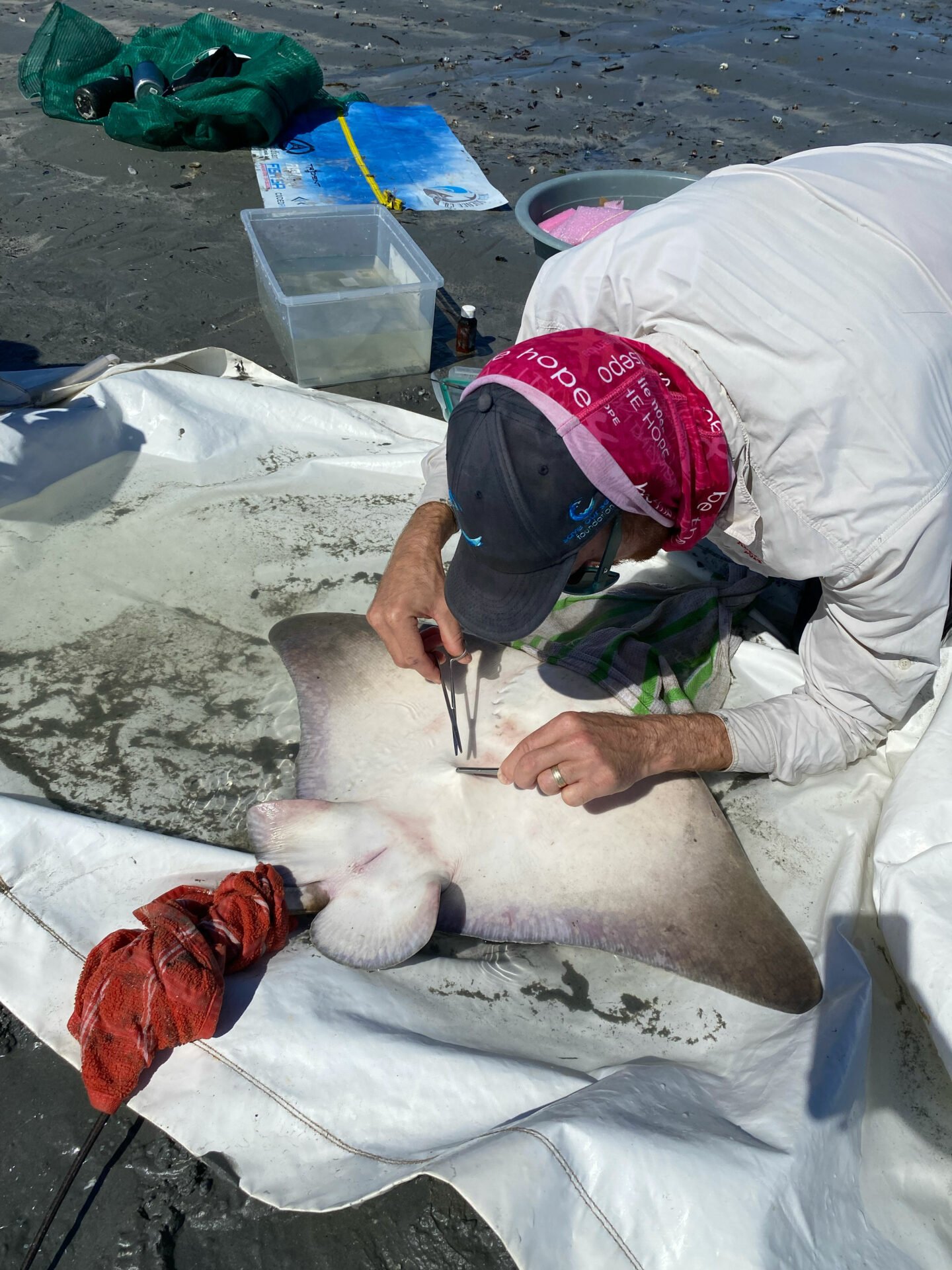
Performing the incision for the tag insertion. Photo © Michelle Soekoe
A small incision is carefully made on the ventral side of the body, near the abdominal cavity. This incision is specifically sized to accommodate the insertion of the acoustic tag, ensuring it is precise yet minimal to promote swift healing.
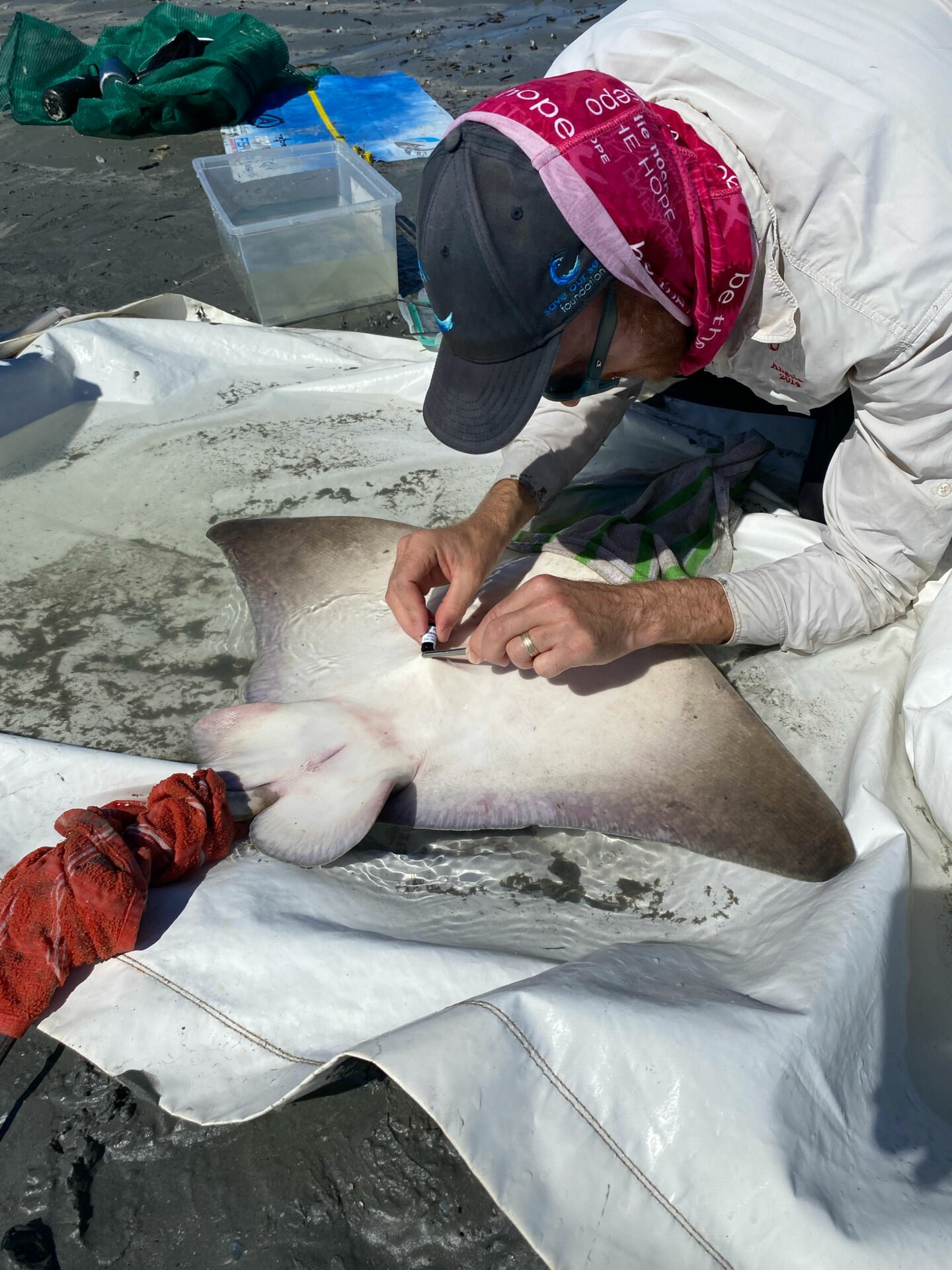
Performing the insertion of the tag. Photo © Michelle Soekoe
The acoustic tag is meticulously positioned within the body cavity to ensure it does not interfere with the eagle ray’s buoyancy or natural movement. This attention to detail helps to ensure that the tag remains securely in place while allowing the eagle ray to continue its natural behaviours without disruption.
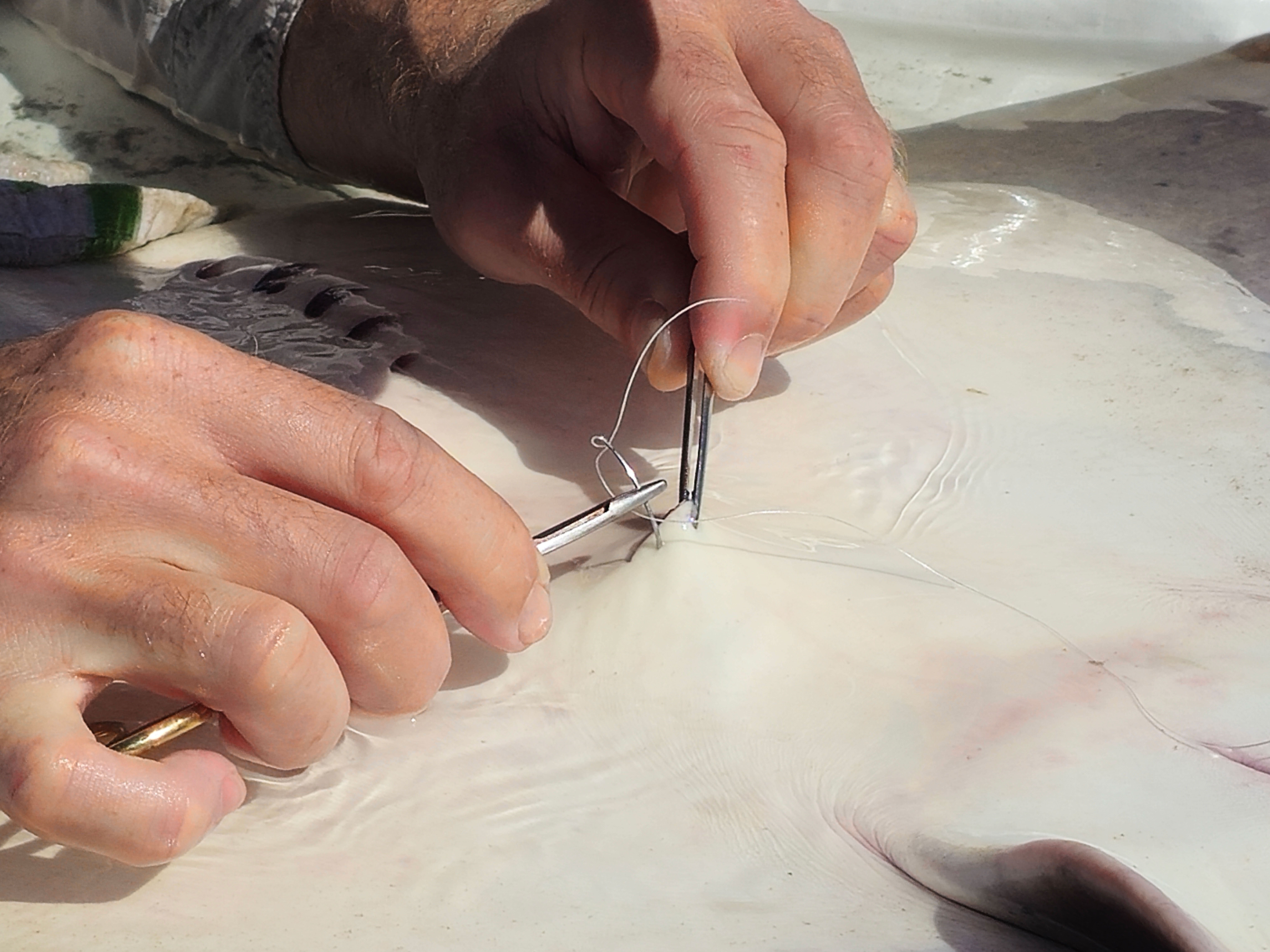
Carefully inserting sutures following the insertion of the tag. Photo © Michelle Soekoe
Once the tag is securely implanted, the incision is carefully closed using sutures to promote optimal healing. Each suture is placed with precision to minimize tension on the surrounding tissue, which aids in reducing the risk of complications. After closure, the area is monitored to ensure it remains clean and free from infection, allowing the wound to heal properly.

Administering antibiotics following the insertion of the tag. Photo © Michelle Soekoe
As an additional precaution, an antibiotic gel is applied to the surgical site to help prevent any potential infections. This gel creates a protective barrier that inhibits bacterial growth and promotes a cleaner healing environment. By applying the antibiotic gel, we enhance the overall safety of the procedure, reducing the risk of complications and ensuring that the eagle ray can recover smoothly. This proactive measure underscores our commitment to the well-being of the animal throughout the tagging process.

The tagged eagle ray being released post-tagging. Photo © Michelle Soekoe
Once the procedure is complete, the eagle ray is allowed to recover in the controlled environment of the sling, which provides a safe and supportive space for it to regain its strength. During this recovery period, we monitor the ray closely to ensure it is stable and responsive. When it is ready, the eagle ray is carefully transported back to the water while still in the sling. Once at the water’s edge, it is gently lowered into the ocean, allowing it the freedom to swim away at its own pace. This gradual transition helps to minimize stress and ensures a smooth return to its natural habitat.
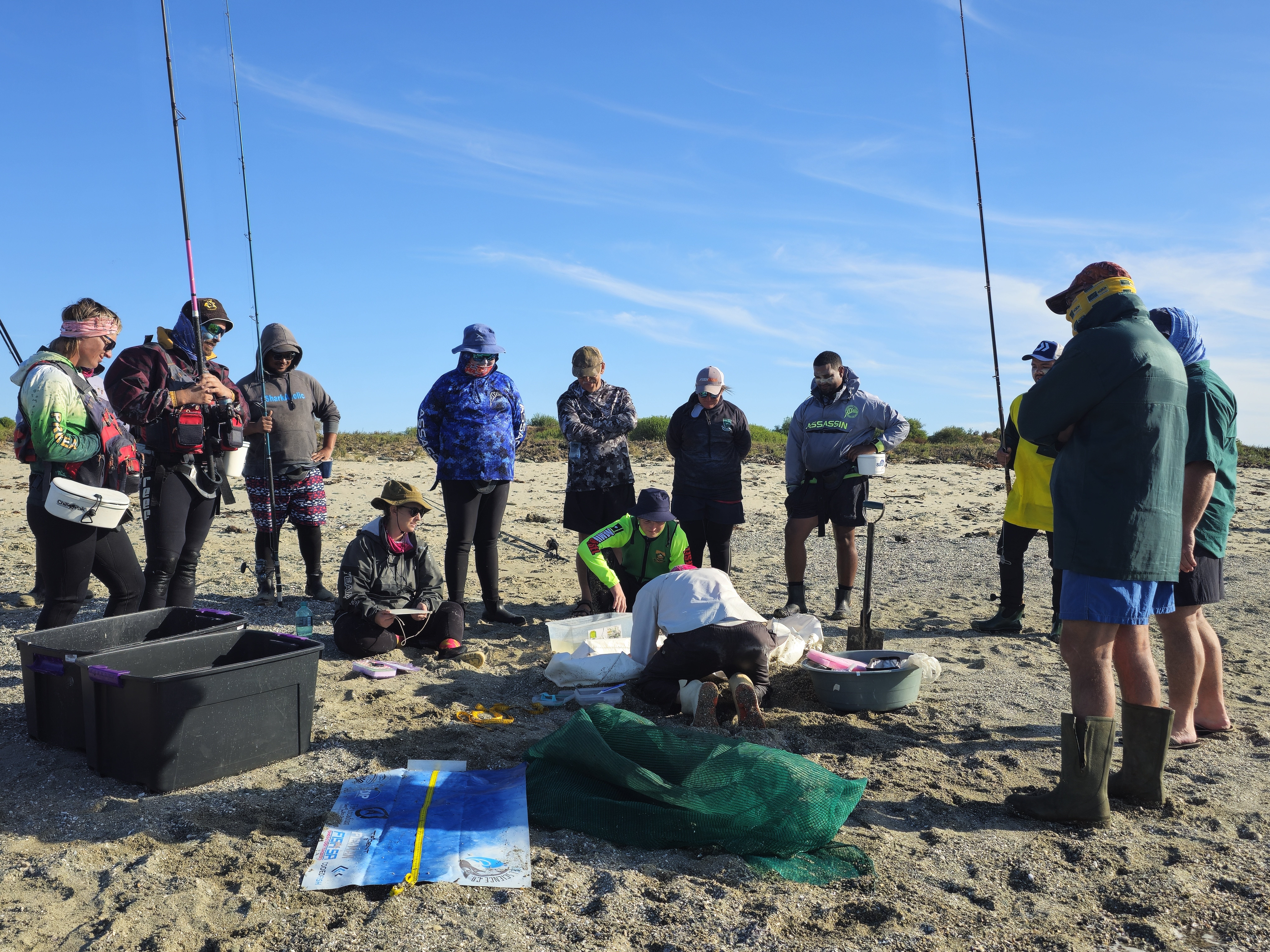
Anglers watching the surgery. Photo © Michelle Soekoe
Overall, it was an incredible day as we successfully tagged six common eagle rays. In addition to this achievement, we also took the opportunity to tag five blue rays and four biscuit skates, contributing to the ongoing research efforts of our fellow scientists.
We are immensely grateful to all the anglers who participated and lent their support—your involvement was crucial to our success, and we couldn’t have accomplished this without you!
A special thank you goes to the West Coast Shore Angling Association and the Neptune Angling Club for their unwavering support of marine research. Your commitment to conservation and collaboration makes a significant difference in our understanding of these species and the health of our marine ecosystems. Together, we are making strides in advancing marine science, and we look forward to more successful outings in the future!
